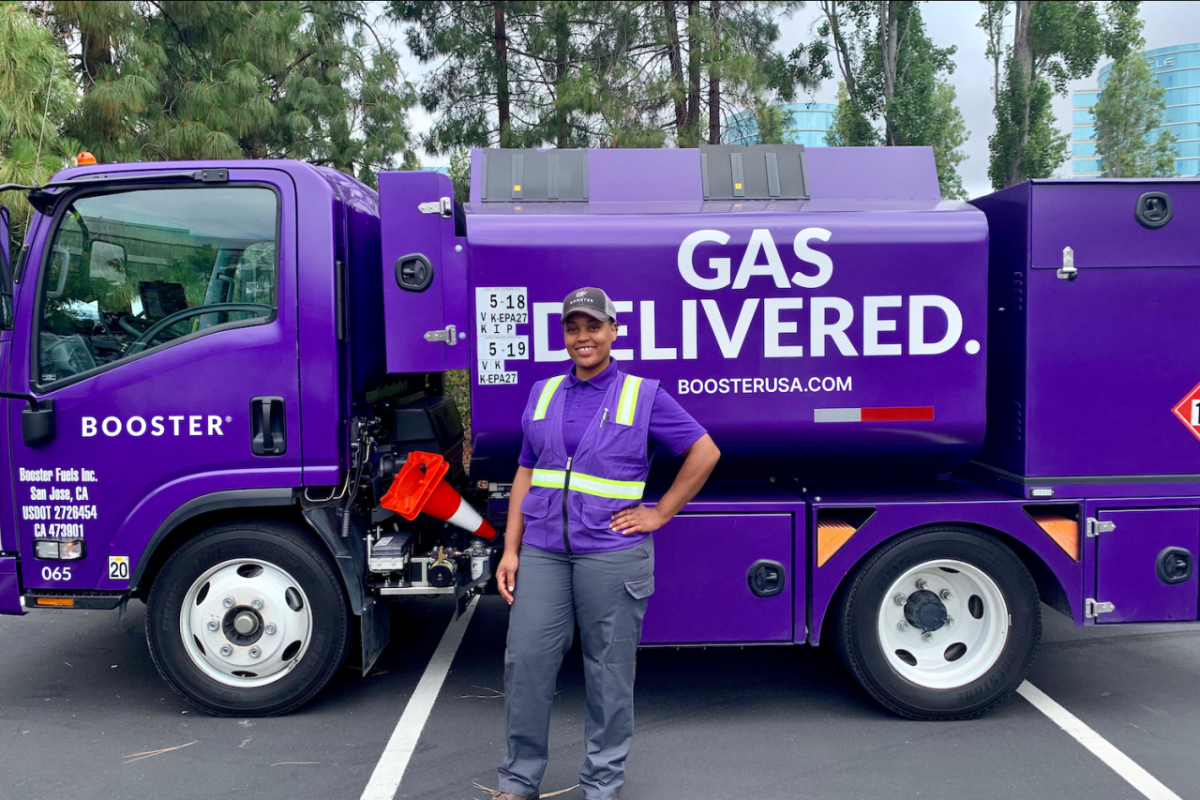Training the Next Generation of U.S. Truck Drivers
Words by Mary Riddle

Originally published on TriplePundit
Truckers are in short supply in the U.S. due to a difficult labor market caused by harsh schedules, wage stagnation, and high up-front costs. Despite the high demand, the trucking industry has had a shortage of drivers for over 15 years. The demand for truck drivers is compounding as the popularity of online shopping and next-day delivery continues to rise. Without major changes, the industry will require an extra 160,000 drivers by 2030.
To address the trucker shortage, the mobile energy delivery company Booster created its internal training program for truckers called CDL (Commercial Driver’s License) Academy. “CDL Academy helps improve the lives of people in the communities we serve,” said Samuel Steinmetz, the company’s manager of ops quality and training. “In 2021, the median personal income in the U.S. was $37,552. At Booster, entry-level service professionals earn $52,000 to $62,400 per year.”
Other trucking companies have CDL training programs, but they often come with up-front costs and low beginning wages that keep many would-be truckers from getting their license.
The idea to create a trucker training program at Booster started with Steinmetz. After working at Booster for two years, he saw how difficult it was to find licensed truck drivers willing to do the work that Booster service professionals do — and to retain those drivers once they’re hired.
“I lobbied our leadership to do our commercial driver training in-house and teach them how to go get their license,” Steinmetz said. “We saw such a big opportunity to drive value for all our stakeholders, they gave me a crack at it. Our pilot had 15 people, and it changed the culture of that yard permanently. From there, it turned into a full-time job. Running CDL Academy and expanding it into our other markets has become a part of the way Booster does business.”
Candidates wanting to get a job with Booster and become service professionals with a clear career path must first go through typical pre-hire Department of Transportation (DOT) requirements including background screening and fingerprinting. After progressing through the background check, candidates are assigned to shifts. They spend the first two hours of each shift learning how to get a commercial driver’s license, and the next six to eight hours learning how to do the job of a Booster service professional, pumping fuel and servicing customer accounts. “We have small equipment that does not require a CDL to operate, so while they’re in training, they operate the smaller equipment,” Steinmetz explained. Candidates have up to 90 days to complete the training program, but Steinmetz noted that he has seen people complete the program in as little as 30 days.
For Booster, investing in growth and development has been a success. “Looking at our data, it’s clear that our CDL Academy produces high-quality teammates who are committed to what we're doing, as seen by the low attrition rates of graduates,” Steinmetz said.
Bringing in high-quality employees is especially critical for Booster because the service professionals’ job is different from the ‘typical’ trucking job.
Steinmetz noted that the national trends that have contributed to the trucker shortage, such as aging labor pools and stagnant wages, are not the same issues that affect Booster. “We look for a different talent profile than many other companies in the industry. There are a lot of people who are interested in driving and would like to enter the industry, but aren’t looking for a job that requires them to drive for 10 straight hours or be away from home for long stretches. That’s where Booster comes in.”
Steinmetz believes candidates who come to CDL Academy and want to work for Booster are attracted to the company because the company provides ample opportunity for career advancement and benefits that other companies in the industry can’t offer. “Booster is different,” Steinmetz said. "We offer our service professionals the chance to be home every day, flexible schedules, tech-enabled work, and a balance between service and driving. And on top of that, we give them the training they need to build a career they love and can grow in.”
The trucking industry has a 5.4 percent unemployment rate, but turnover remains high, with about 40 percent of truckers staying at a given carrier for less than a year before moving on. “That last part hurts us. We need people to learn the job and stay,” Steinmetz said. “It’s easy to teach people how to drive a truck, but it is difficult to learn the job and choose to stay long-term. We need to find people who are already a good cultural fit and then teach them what they need to know.”
This article series is sponsored by Booster and produced by the TriplePundit editorial team.
Image courtesy of Booster

